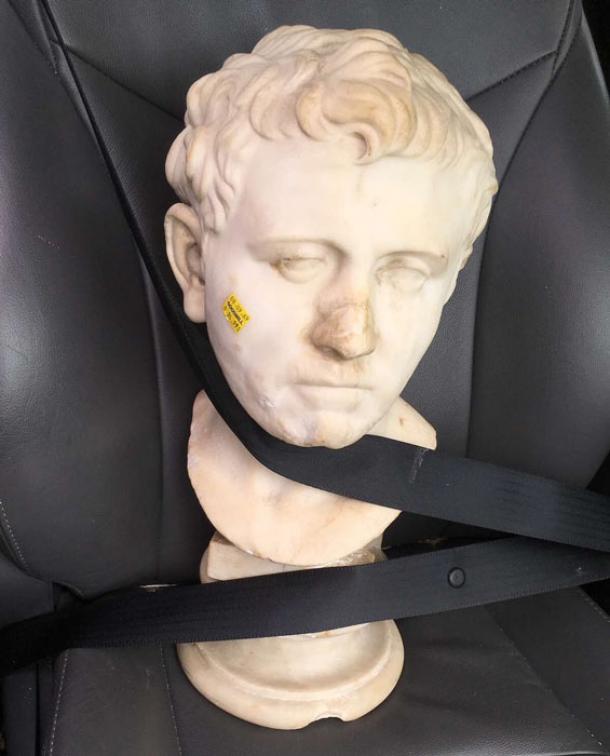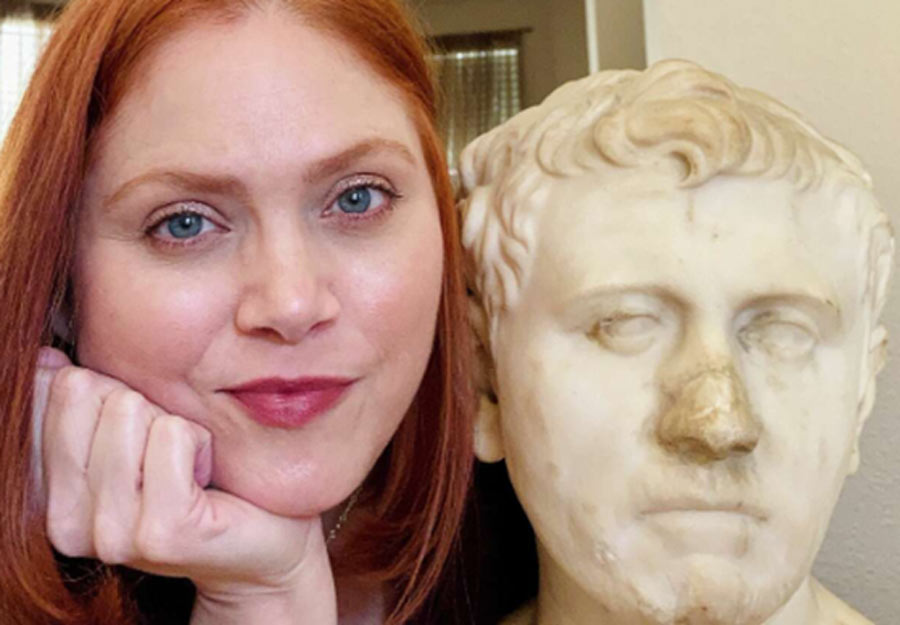Looted Ancient Roman Bust Found In Texas Thrift Shop
A 52 pound, 1st-century Roman marble bust turned up in a Texas store. Having been sold to a local woman for $34.99, the ancient artifact will now be returned to Germany.
In 2018, Laura Young, the owner of a vintage goods store in Austin, Texas, visited the Goodwill store looking for curios to resell. She discovered the 52-pound carved marble bust amidst heaps of junk and bought it for a mere $34.99. Little did she know that it might have been looted in Germany during the 2nd World War. And less did she suspect that her purchase probably depicts a famous Roman military leader.
Historians ‘Bust Up’ Over The Man’s Identity
Many historians insist the bust depicts Nero Claudius Drusus Germanicus (39-9 BC), also known as Drusus the Elder, a celebrated Roman politician and commander. However, Lynley McAlpine, a postdoctoral curatorial fellow and Roman art specialist at the San Antonio museum, told Express-News ‘it might be a representation of Sextus Pompeius Magnus Pius (c. 67 – 35 BC).’. Furthermore, Jessica Powers, interim chief curator of the art of the ancient Mediterranean world at the museum in Germany told Express-News agreed that it ‘might have been a son of Pompey. We don’t know who it is of.”
- Venus: Eroticized Goddess of Love, Fertility, Agriculture… and Infidelity?
- Hold Your Horses! Did Caligula Actually Make a Steed a Roman Consul?

Portrait of a man, (unidentified) Roman, late 1st century BC-early 1st century AD, marble. (Lent by the Bavarian Administration of State-Owned Palaces, Gardens and Lakes)
While the man’s identity remains a mystery a report in The Art Newspaper says Sotheby’s have determined it dates to the first century AD. Furthermore, Sotheby’s have also confirmed that the bust was last recorded in a Bavarian museum in Germany titled ‘ Portrait of a man.’ Now, Texas arts enthusiast Young is giving the ancient Roman bust back to Germany, from which it was stolen during the Second World War.
Tracking The Travelling Roman Bust
Young told the San Antonio Express-News that the man looked like an old Roman and that in the sunlight, ‘it looked like something that could be very, very special.’
Young only realised just how special it was when she tried to have Sotheby’s sell it for her. Leila Amineddoleh is a New York City attorney in art law who represents Young, and she said the artifact could ‘not be sold legally.’ Amineddoleh advised Laura ‘not to sell it either publicly or privately, that is, on the black market. She risked expensive legal battles or criminal penalties if she tried’.
- When Julius Caesar Was Kidnapped by Pirates - And Made Them Increase the Ransom!
- Germanicus and Agrippina: The Golden Couple, Parents of the “Mad” Emperor Caligula

The Roman bust shortly after she found it at a Texas thrift store. (Laura Young/Mysanantonio)
Unearthing Roman busts is generally the job of European archaeologists and when they show up on other continents there is always an interesting story attached. In this case it is known that the bust went from Italy to Bavaria in the 19th century. Amineddoleh says ‘The Pompejanum was heavily bombed in 1944 and likely was unguarded, so Allied soldiers could walk in freely and take what they liked.’ However, what is not yet clear is how it got from Germany to the US and ended up at the Goodwill store in Texas.
Young said Goodwill just has a door in the back where ‘you leave stuff and then drive away.’ This means anybody could have dropped off the sculpture, and until that person steps forward, the US history of the piece will remain unknown.
Who, Where And What’s Next?
While the weight of historians would agree that the bust most probably depicts Drusus Germanicus, who fought in Germany for the Roman Empire, Lynley McAlpine and Jessica Powers suggest Sextus Magnus, another military leader and son of Pompey. Who the man was might never be known, but where he came from is clear, and his repatriation with Germany has taken a lot of work.
Amineddoleh, on behalf of Young, has been negotiating with the Bavarian Administration of State-Owned Palaces, Gardens and Lakes in Germany for almost four years. They have been agreeing on all of the costs associated with returning the bust to Germany, and of course a finder’s fee for her client. This week Bavarian heritage officials signed on the dotted lines. For her honourable actions, when the bust is eventually reinstalled, a plaque will mention Young’s name. However, for now, the spectacular artifact will be available for Americans to see at the San Antonio Museum of Art.
Top image: Vintage goods store owner, Laura Young, with the Roman bust. Source: Laura Young / MySanantonio
By Ashley Cowie

















